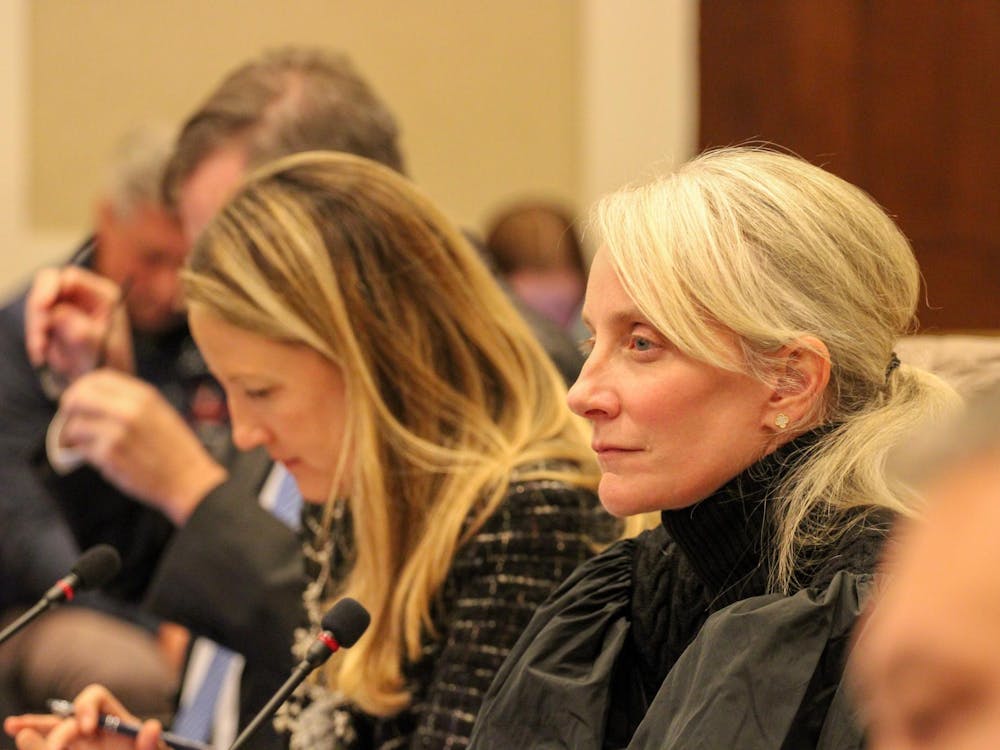This winter has been a nasty one for our economy, and according to a number of signs, the slowdown could be far from over. With productivity growth decreasing rapidly, the stock markets tumbling off their inflated peaks, and recent data showing very few signs of improvement, the U.S. may be closer to a recession than you might expect. Yet, my outlook remains optimistic: the Fed seems now to be correcting its former mistakes and it will do all that it can to continue our record economic expansion.
It is tough, however, to get past the recent flood of gloomy data. Chain store and retail sales both reached new lows this December, in a month that usually brings a flood of Christmas shoppers to the malls and sends the data skyward.
Industrial production, an important facet of our nation's economy, slowed in the past couple of months. Business inventories rapidly are accumulating, as goods are left sitting on the shelves. And the recently published Livingston Survey of economic forecasters predicts that rising unemployment and slowed growth in gross domestic product (GDP) are to be expected in the coming quarters of 2001.
Fortunately, the Federal Reserve seems to be catching on, and it has made attempts at taking corrective action. Following the release of one of the lowest National Association of Purchasing Managers' figures in recent years, Alan Greenspan and the Federal Reserve decided to surprise the markets and inject a bit of much-needed liquidity into the system. The Fed's reduction in interest rates sent stocks soaring.
Yet, ironically, the slowing growth of last year and the projected lull of the coming months were precisely what policymakers at the Federal Reserve had been hoping for, and therein lies the problem. Just six months ago, the Fed had been trying to slow the economy to what it felt was a sustainable rate of growth, and its attempts at putting the breaks on a once-speeding economy now are turning dangerously recessionary.
From 1995 to 1999, annual GDP growth averaged around 4 percent, a figure way above what many economists felt was sustainable. Estimates of our economy's potential growth were grounded around 2.5 to 3 percent. Many thought that growth at higher levels would bring inflationary imbalances, as in order to produce more goods, businesses would have to raise their prices and pay more for their workers. Thus the Fed took a preemptive posture against the threat of rising inflation, and it aggressively raised benchmark interest rates over the last two years. The recent slowing of our economy is in many ways a direct result of the Fed's monetary policy.
However, through a number of innovations in information technologies and through the use of computers, the productivity of workers in the U.S. economy was growing, and it was growing rapidly. Workers were providing more services and producing more goods without added costs, and judging by stagnant price indices, serious inflationary problems had yet to emerge. In some ways, the Fed's continued stance against the threat of inflation was overly cautious, given the elevated productivity numbers, and many "new paradigm" proponents accosted Greenspan's aggressive posture toward raising interest rates.
The "new paradigm" criticism is perhaps now stronger than ever, and although it might have some holes, it certainly merits recollection. Many feel that if the Fed had not tightened interest rates and let the economy grow as it pleased, investment in new technologies would have continued, and productivity might have soared to ever-greater heights as these new technological innovations were implemented. Were it not for the rate hikes, even worries about the profitability of e-commerce and tech firms might have been deferred, and investment in these areas might have stayed strong.
Now, however, the Fed is faced with the frighteningly real possibility of an economic contraction. Instead of engineering a soft landing for the economy to float toward once the productivity numbers began to fall, the Fed might have led us straight down into a recessionary abyss, and given the lags of monetary policy, it may be too late to reverse some of the downside effects.
Many in the forecasting world are expecting dramatically slowed first quarter GDP figures for 2001. Unemployment potentially could lift off its recent 4 percent trough. I would not be surprised to see the Fed continue its action in favor of more liquidity, as they take back some of the tightening of the last two years by dropping interest rate targets. I don't, however, anticipate much loosening of the tight labor market, and there is no reason to think that employment opportunities for this year's graduates won't be plentiful.
The question of whether or not the economic slowdown will become recessionary is one that I can't answer. If the economy does grind to a halt, however, the Fed luckily has sufficient leverage to lower interest rates, stimulate investment and add liquidity. Whether confidence in the U.S. remains robust, and whether consumer demand remains strong will probably be the ultimate determinate of our nation's economic health. With the recent lulls in retail and chain store sales, and with December's gloomy consumer confidence report, the outlook does not appear good.






